Determination of free swell index of soils
8 likes8,125 views
This document describes the procedure for determining the free swell index of soils. The test involves taking a soil sample, drying it in an oven, sieving it to remove particles larger than 425 microns, and placing 10g of the remaining soil in each of two 100ml flasks. Kerosene is added to one flask and distilled water to the other, and both are stirred and allowed to settle for at least 24 hours. The free swell index is calculated as the percentage increase in volume of the soil-water mixture over the soil-kerosene mixture. At least three readings should be taken and averaged to obtain the final result.
1 of 13
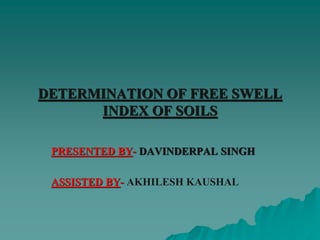












Recommended
Field identification tests



Field identification testsshabir rufai
╠²
This document describes several field tests used to identify soil types:
- Visual examination can distinguish gravel, sand, silt, and clay by drying and separating soil components. Silt and clay particles cannot be separated without magnification.
- The sedimentation test involves shaking soil in water to observe how long different particle sizes take to settle, allowing estimation of gravel, sand, silt, and clay percentages.
- Plasticity and strength tests provide information about soil texture and cohesiveness by attempting to roll moist soil into threads or break dried soil patties by hand. The results can indicate clay, silt, or sand-dominated soils.Proctor compaction test



Proctor compaction testFaizan Tanoli
╠²
The document describes the standard Proctor compaction test procedure. The test is used to determine the maximum dry density and optimum moisture content of soils. It involves compacting soil samples at incrementally increased moisture contents using a specified compaction method. A compaction curve is plotted showing the relationship between dry density and moisture content. The peak of the curve indicates the optimum moisture content and maximum dry density achieved for that soil. The test uses a cylindrical metal mold, rammer, balance, oven and other equipment to compact and analyze the soil samples according to steps that sieve, mix, compact and weigh the soil at different moistures.Cement stabilization of soils ppt



Cement stabilization of soils pptVeluppillai Mohan
╠²
This document discusses different methods of soil stabilization, including mechanical and chemical stabilization. It provides details on two primary stabilization methods - mechanical and chemical/additive. The document also lists the advantages of soil stabilization and describes the basic ingredients and process for cement stabilization of soils for pavement construction. It gives an overview of a project rehabilitating roads in Trincomalee District, Sri Lanka after the 2004 tsunami, including photos showing the road construction and stabilization process.Aggregate impact value test experiment



Aggregate impact value test experimentcharith98
╠²
The document describes an experiment to determine the aggregate impact value of a given specimen through a standardized test procedure. Three samples were tested by subjecting aggregates retained between 10mm and 12.5mm sieves to 15 blows from a falling hammer. The percentage of material passing a 2.36mm sieve was calculated to determine the aggregate impact value, with average values below 10 considered strong and above 35 too weak for construction. The tested samples had average impact values of 44.13%, indicating suitability for construction applications.Soil Nailing



Soil NailingSeminar Links
╠²
Soil nailing is a technique used to reinforce and strengthen existing ground.Soil nailing consists of installing closely spaced bars into a slope or excavation as construction proceeds from top down.It is an effective and economical method of constructing retaining wall for excavation support, support of hill cuts, bridge abutments and high ways.This process is effective in cohesive soil, broken rock, shale or fixed face conditions.SPT Field Test.pdf



SPT Field Test.pdfKASHYAP CHINTU
╠²
In-situ testing methods like the Standard Penetration Test (SPT) are used when it is difficult to obtain undisturbed soil samples. The SPT involves driving a split spoon sampler into the soil using a hammer and measuring the blow count. Corrections are made to the blow count for factors like hammer efficiency, borehole diameter, and overburden pressure. Empirical correlations with soil properties like density, shear strength, and type are then used to inform foundation design.Compaction



CompactionRavindranath Chandra
╠²
Compaction is the densification of soil through mechanical means such as rolling, ramming, or vibration to reduce porosity and increase dry density. Laboratory compaction tests determine the optimum water content and maximum dry density for a soil through controlled compaction and varying water content. Standard Proctor and Modified Proctor tests involve compacting soil in layers in a mold using a specified hammer weight and drop height. Field compaction equipment includes smooth drum rollers, pneumatic tired rollers, sheep-foot rollers, and rammers or vibrators. The dry density achieved depends on factors like water content, compactive effort, soil type, and additives used.Class 7 Consolidation Test ( Geotechnical Engineering )



Class 7 Consolidation Test ( Geotechnical Engineering )Hossam Shafiq I
╠²
This document provides an overview of a geotechnical engineering laboratory class on conducting a consolidation test on cohesive soil. The consolidation test is used to determine key soil properties like preconsolidation stress, compression index, recompression index, and coefficient of consolidation. The procedure involves placing a saturated soil sample in a consolidometer, applying incremental loads, and measuring the change in height over time to generate consolidation curves. Students will perform the test, calculate soil properties from the results, and include 10 plots and calculations in a laboratory report.Los Angeles Abrasion Test.pptx



Los Angeles Abrasion Test.pptxNUR
╠²
Los Angeles Abrasion Test
To determine the Los Angeles abrasion value.
To find the suitability of aggregates for use in road construction. Select the most suitable aggregate for different kinds of works based on the abrasion value. The test is significant to determine the hardness (and toughness) of the material.
The difference between the original and final weights of the sample represents the actual wear. This value is expressed as a percentage of the original weight of the sample and is reported as the percentage of wear.
Penetration Test for Bitumen



Penetration Test for BitumenShweta Sagar
╠²
This presentation is of Penetration Test for Bitumen. Penetration test measures the hardness or softness of bitumen by measuring the depth in tenths of a millimeter to which a standard loaded needle will penetrate vertically in 5 seconds.
There are different grades of Bitumen used for the civil (especially for roads works) work. This presentation consists of the aim, significance, about the apparatus used procedure, noting the reading, Bis recommendation values and IRC recommendation values, precautions, Consolidation



ConsolidationKHK karimi
╠²
Consolidation refers to the compression o settlement that soil undergo As response of placing loads on to the ground
Classification os soil



Classification os soilaasimnaeem
╠²
This document provides information on two soil classification systems: the AASHTO and USCS systems. The AASHTO system classifies soils into eight groups (A-1 through A-8) based on particle size distribution, liquid limit, and plasticity index. The USCS system classifies soils into four categories (coarse-grained, fine-grained, organic, and peat) based on grain size, plasticity, and compressibility. Both systems use laboratory tests like sieve analysis and Atterberg limits to determine the soil classification group. The document describes the classification criteria and symbols used in detail for each system.Slope stability analysis methods



Slope stability analysis methodszaidalFarhan1
╠²
Slope stability analysis methods
By Zaid Al-Farhan / Geotechnical Engineer
Mosul University / Iraq 2.Determination of specific gravity of soil



2.Determination of specific gravity of soilMd. Parvej
╠²
This document presents a summary of a student's presentation on determining the specific gravity of soil using the pycnometer method. The objectives, test specifications, procedure, observations, calculations, and results are outlined. The key steps include measuring the mass of an empty pycnometer, the pycnometer with dry soil, and the pycnometer filled with water to calculate the specific gravity using a standard formula. The specific gravity of the soil tested was found to be 2.45 based on the pycnometer test results.Index properties



Index propertiesAmanpreet Tangri
╠²
index properties of soil, Those properties of soil which are used in the identification and classification of soil are known as INDEX PROPERTIES
Water content
Specific gravity
In-situ density
Particle size
Consistency
Relative Density
Geotechnical Engineering-I [Lec #7: Sieve Analysis-2]![Geotechnical Engineering-I [Lec #7: Sieve Analysis-2]](https://cdn.slidesharecdn.com/ss_thumbnails/7-180923180808-thumbnail.jpg?width=560&fit=bounds)
![Geotechnical Engineering-I [Lec #7: Sieve Analysis-2]](https://cdn.slidesharecdn.com/ss_thumbnails/7-180923180808-thumbnail.jpg?width=560&fit=bounds)
![Geotechnical Engineering-I [Lec #7: Sieve Analysis-2]](https://cdn.slidesharecdn.com/ss_thumbnails/7-180923180808-thumbnail.jpg?width=560&fit=bounds)
![Geotechnical Engineering-I [Lec #7: Sieve Analysis-2]](https://cdn.slidesharecdn.com/ss_thumbnails/7-180923180808-thumbnail.jpg?width=560&fit=bounds)
Geotechnical Engineering-I [Lec #7: Sieve Analysis-2]Muhammad Irfan
╠²
Class notes of Geotechnical Engineering course I used to teach at UET Lahore. Feel free to download the slide show.
Anyone looking to modify these files and use them for their own teaching purposes can contact me directly to get hold of editable version.Chapter 3 compaction and consolidation



Chapter 3 compaction and consolidationDYPCET
╠²
1. Compaction is a mechanical process carried out before construction to reduce the volume of subsoil through expulsion of air voids, whereas consolidation starts after construction and reduces volume through expulsion of water voids as soil experiences static loading from the structure's self-weight.
2. Standard and modified proctor tests are used to determine the optimum moisture content and maximum dry density of soils for compaction. The modified test uses a heavier rammer and more soil layers to achieve higher densities.
3. Various compaction methods include rammers, vibratory and smooth wheeled rollers, sheepsfoot rollers, pneumatic tyred rollers, grid rollers, and pad foot rollers, with different methodsShear strength of soil



Shear strength of soilAditya Mistry
╠²
The document provides information about shear strength of soil. It defines shear strength and its components of cohesion and internal friction. It discusses Mohr's circle of stress and Mohr-Coulomb theory for shear strength. The types of soil are classified based on drainage conditions during shear testing. Common shear strength tests like direct shear test, triaxial test, unconfined compression test and vane shear test are also explained. Sample calculations for shear strength determination from test results are presented.Liquid limit & plastic limit test



Liquid limit & plastic limit testRaz Azad
╠²
This document summarizes the liquid limit and plastic limit tests conducted on a soil sample. The liquid limit was found to be 51.679% using two different methods that produced similar results. The plastic limit was 24.525%. Based on these Atterberg limits, the soil was classified as clay with high plasticity. The limits help characterize the soil's engineering properties and behavior when wet or dry. The experiment showed the soil behaves plastically when wet and becomes hard when dry, typical of clays.Asphalt rubber pavement



Asphalt rubber pavementSUPREETH Suppi
╠²
This document discusses using crumb rubber from waste tires in asphalt pavement. It begins with an introduction that notes the large volume of waste tires produced globally each year and the environmental issues with current disposal methods. The objectives are then stated as utilizing waste rubber in flexible pavement construction to reduce costs and natural resource usage. Various materials used are described, including aggregates, asphalt, and crumb rubber. Testing conducted on the materials is summarized. A literature review covers several papers on using crumb rubber in asphalt mixes. The methodology section outlines the test specimens prepared with different percentages of crumb rubber added. Marshall stability tests are then used to evaluate the mixtures and determine the optimal crumb rubber content.Darcy's law



Darcy's lawParth Joshi
╠²
The document discusses permeability, which is the property of soil that allows water to flow through it. Permeability depends on factors like particle size, void ratio, and degree of saturation. Methods to determine the coefficient of permeability include constant head tests, falling head tests, and pumping tests. Darcy's law states that the rate of water flow through soil is proportional to the hydraulic gradient, where the coefficient of proportionality is the permeability. The law was established by Henry Darcy based on experiments in 1856 and is valid for laminar flow through saturated soils.Ppt sieve analysis



Ppt sieve analysisManoj Kumar
╠²
This document discusses soil classification methods including sieve analysis and hydrometer analysis. Sieve analysis is used to determine the distribution of coarser soil particles by size, while hydrometer analysis determines the distribution of finer particles. The tests are used to classify soil type and evaluate properties like permeability, density and shear strength. Procedures are described for conducting the analyses, calculating relevant particle sizes and distribution, and classifying soils based on the unified soil classification system.Permeability and factors affecting permeability 



Permeability and factors affecting permeability roshan mankhair
╠²
Permeability is the property of soil that allows water to flow through it, denoted by 'K'. Factors that affect permeability include grain size, properties of pore water, temperature, void ratio, stratification, entrapped air/organics, adsorbed water, degree of saturation, shape of particles, and structure of the soil mass. Permeability generally increases with larger grain size, higher temperatures, and void ratios, and decreases with stratified layers perpendicular to flow, entrapped air/organics, adsorbed water, partial saturation, angular particles, and dispersed soil structures.TERZAGHIŌĆÖS BEARING CAPACITY THEORY



TERZAGHIŌĆÖS BEARING CAPACITY THEORYSANJEEV Wazir
╠²
TERZAGHIŌĆÖS BEARING CAPACITY THEORY
DERIVATION OF EQUATION TERZAGHIŌĆÖS BEARING CAPACITY THEORY
TERZAGHIŌĆÖS BEARING CAPACITY FACTORS
Download vedio link
https://youtu.be/imy61hU0_yoLecture 5 soil compaction



Lecture 5 soil compactionDr.Abdulmannan Orabi
╠²
This document provides information about soil compaction from an engineering lecture. It defines soil compaction, discusses how it increases soil strength and reduces permeability. It explains the principles of compaction including how it works by reducing air voids. A soil compaction curve is presented, defining optimum moisture content. Factors that affect compaction are listed such as soil type, compactive effort, and water content. Common compaction methods are also briefly outlined.Index properties of soil and Classification of soils(Geotechnical engineering)



Index properties of soil and Classification of soils(Geotechnical engineering)Manoj Kumar Kotagiri
╠²
This document provides an overview of index properties and classification of soils. It discusses various index properties such as moisture content, specific gravity, density, particle size distribution, and consistency limits. Methods for determining these properties, such as oven drying, pycnometer, core cutter, and sieve and sedimentation analysis are described. Index properties are important for identifying soils and determining their engineering behavior and properties like strength, compressibility, and permeability.A Study on Stabilization of Black Cotton Soil by Use of Fly Ash, Ferric Chlor...



A Study on Stabilization of Black Cotton Soil by Use of Fly Ash, Ferric Chlor...inventy
╠²
Research Inventy : International Journal of Engineering and Science is published by the group of young academic and industrial researchers with 12 Issues per year. It is an online as well as print version open access journal that provides rapid publication (monthly) of articles in all areas of the subject such as: civil, mechanical, chemical, electronic and computer engineering as well as production and information technology. The Journal welcomes the submission of manuscripts that meet the general criteria of significance and scientific excellence. Papers will be published by rapid process within 20 days after acceptance and peer review process takes only 7 days. All articles published in Research Inventy will be peer-reviewed.Shrinkage Limit Test



Shrinkage Limit TestSOURABH PAL
╠²
This document discusses the shrinkage limit test for soils. It defines shrinkage limit as the moisture content at which a saturated soil stops decreasing in volume as it dries, even though saturation remains near 100%. The test involves drying a soil sample and measuring its volume and weight changes to determine the moisture content at which further drying does not cause additional volume reduction. This limit provides important information for designing structures in expansive soils and assessing soil suitability for construction materials.FINENESS TEST OF CEMENT (DRY SIEVING)



FINENESS TEST OF CEMENT (DRY SIEVING)Davinderpal Singh
╠²
This document describes the procedure for performing a dry sieving fineness test of cement. The fineness test checks that proper grinding of cement has occurred, as finer cement particles lead to quicker chemical reactions, earlier strength gain, and a larger surface area. The dry sieving test involves weighing 100g of dried cement sample, sieving it through a 90 micron sieve for 10-15 minutes, weighing the residue left on the sieve, and calculating the percentage fineness based on the weights. The test is repeated at least three times and the average result is reported. Accuracy and following procedural steps carefully are important for obtaining reliable results.Marshall test



Marshall testDavinderpal Singh
╠²
The document summarizes the results of a Marshall test conducted to determine the optimum asphalt content for an asphalt mix. The test involved two stages: specimen preparation and specimen testing. In specimen preparation, aggregates were graded, dried, and mixed with asphalt. Specimens were molded and prepared for testing. In specimen testing, specimens were tested for properties like stability, flow, density, air voids and voids filled with asphalt at different asphalt contents. Charts were created to analyze the test results. The optimum asphalt content was determined to be 4.8% based on the asphalt content corresponding to maximum stability and density and median air voids.More Related Content
What's hot (20)
Los Angeles Abrasion Test.pptx



Los Angeles Abrasion Test.pptxNUR
╠²
Los Angeles Abrasion Test
To determine the Los Angeles abrasion value.
To find the suitability of aggregates for use in road construction. Select the most suitable aggregate for different kinds of works based on the abrasion value. The test is significant to determine the hardness (and toughness) of the material.
The difference between the original and final weights of the sample represents the actual wear. This value is expressed as a percentage of the original weight of the sample and is reported as the percentage of wear.
Penetration Test for Bitumen



Penetration Test for BitumenShweta Sagar
╠²
This presentation is of Penetration Test for Bitumen. Penetration test measures the hardness or softness of bitumen by measuring the depth in tenths of a millimeter to which a standard loaded needle will penetrate vertically in 5 seconds.
There are different grades of Bitumen used for the civil (especially for roads works) work. This presentation consists of the aim, significance, about the apparatus used procedure, noting the reading, Bis recommendation values and IRC recommendation values, precautions, Consolidation



ConsolidationKHK karimi
╠²
Consolidation refers to the compression o settlement that soil undergo As response of placing loads on to the ground
Classification os soil



Classification os soilaasimnaeem
╠²
This document provides information on two soil classification systems: the AASHTO and USCS systems. The AASHTO system classifies soils into eight groups (A-1 through A-8) based on particle size distribution, liquid limit, and plasticity index. The USCS system classifies soils into four categories (coarse-grained, fine-grained, organic, and peat) based on grain size, plasticity, and compressibility. Both systems use laboratory tests like sieve analysis and Atterberg limits to determine the soil classification group. The document describes the classification criteria and symbols used in detail for each system.Slope stability analysis methods



Slope stability analysis methodszaidalFarhan1
╠²
Slope stability analysis methods
By Zaid Al-Farhan / Geotechnical Engineer
Mosul University / Iraq 2.Determination of specific gravity of soil



2.Determination of specific gravity of soilMd. Parvej
╠²
This document presents a summary of a student's presentation on determining the specific gravity of soil using the pycnometer method. The objectives, test specifications, procedure, observations, calculations, and results are outlined. The key steps include measuring the mass of an empty pycnometer, the pycnometer with dry soil, and the pycnometer filled with water to calculate the specific gravity using a standard formula. The specific gravity of the soil tested was found to be 2.45 based on the pycnometer test results.Index properties



Index propertiesAmanpreet Tangri
╠²
index properties of soil, Those properties of soil which are used in the identification and classification of soil are known as INDEX PROPERTIES
Water content
Specific gravity
In-situ density
Particle size
Consistency
Relative Density
Geotechnical Engineering-I [Lec #7: Sieve Analysis-2]![Geotechnical Engineering-I [Lec #7: Sieve Analysis-2]](https://cdn.slidesharecdn.com/ss_thumbnails/7-180923180808-thumbnail.jpg?width=560&fit=bounds)
![Geotechnical Engineering-I [Lec #7: Sieve Analysis-2]](https://cdn.slidesharecdn.com/ss_thumbnails/7-180923180808-thumbnail.jpg?width=560&fit=bounds)
![Geotechnical Engineering-I [Lec #7: Sieve Analysis-2]](https://cdn.slidesharecdn.com/ss_thumbnails/7-180923180808-thumbnail.jpg?width=560&fit=bounds)
![Geotechnical Engineering-I [Lec #7: Sieve Analysis-2]](https://cdn.slidesharecdn.com/ss_thumbnails/7-180923180808-thumbnail.jpg?width=560&fit=bounds)
Geotechnical Engineering-I [Lec #7: Sieve Analysis-2]Muhammad Irfan
╠²
Class notes of Geotechnical Engineering course I used to teach at UET Lahore. Feel free to download the slide show.
Anyone looking to modify these files and use them for their own teaching purposes can contact me directly to get hold of editable version.Chapter 3 compaction and consolidation



Chapter 3 compaction and consolidationDYPCET
╠²
1. Compaction is a mechanical process carried out before construction to reduce the volume of subsoil through expulsion of air voids, whereas consolidation starts after construction and reduces volume through expulsion of water voids as soil experiences static loading from the structure's self-weight.
2. Standard and modified proctor tests are used to determine the optimum moisture content and maximum dry density of soils for compaction. The modified test uses a heavier rammer and more soil layers to achieve higher densities.
3. Various compaction methods include rammers, vibratory and smooth wheeled rollers, sheepsfoot rollers, pneumatic tyred rollers, grid rollers, and pad foot rollers, with different methodsShear strength of soil



Shear strength of soilAditya Mistry
╠²
The document provides information about shear strength of soil. It defines shear strength and its components of cohesion and internal friction. It discusses Mohr's circle of stress and Mohr-Coulomb theory for shear strength. The types of soil are classified based on drainage conditions during shear testing. Common shear strength tests like direct shear test, triaxial test, unconfined compression test and vane shear test are also explained. Sample calculations for shear strength determination from test results are presented.Liquid limit & plastic limit test



Liquid limit & plastic limit testRaz Azad
╠²
This document summarizes the liquid limit and plastic limit tests conducted on a soil sample. The liquid limit was found to be 51.679% using two different methods that produced similar results. The plastic limit was 24.525%. Based on these Atterberg limits, the soil was classified as clay with high plasticity. The limits help characterize the soil's engineering properties and behavior when wet or dry. The experiment showed the soil behaves plastically when wet and becomes hard when dry, typical of clays.Asphalt rubber pavement



Asphalt rubber pavementSUPREETH Suppi
╠²
This document discusses using crumb rubber from waste tires in asphalt pavement. It begins with an introduction that notes the large volume of waste tires produced globally each year and the environmental issues with current disposal methods. The objectives are then stated as utilizing waste rubber in flexible pavement construction to reduce costs and natural resource usage. Various materials used are described, including aggregates, asphalt, and crumb rubber. Testing conducted on the materials is summarized. A literature review covers several papers on using crumb rubber in asphalt mixes. The methodology section outlines the test specimens prepared with different percentages of crumb rubber added. Marshall stability tests are then used to evaluate the mixtures and determine the optimal crumb rubber content.Darcy's law



Darcy's lawParth Joshi
╠²
The document discusses permeability, which is the property of soil that allows water to flow through it. Permeability depends on factors like particle size, void ratio, and degree of saturation. Methods to determine the coefficient of permeability include constant head tests, falling head tests, and pumping tests. Darcy's law states that the rate of water flow through soil is proportional to the hydraulic gradient, where the coefficient of proportionality is the permeability. The law was established by Henry Darcy based on experiments in 1856 and is valid for laminar flow through saturated soils.Ppt sieve analysis



Ppt sieve analysisManoj Kumar
╠²
This document discusses soil classification methods including sieve analysis and hydrometer analysis. Sieve analysis is used to determine the distribution of coarser soil particles by size, while hydrometer analysis determines the distribution of finer particles. The tests are used to classify soil type and evaluate properties like permeability, density and shear strength. Procedures are described for conducting the analyses, calculating relevant particle sizes and distribution, and classifying soils based on the unified soil classification system.Permeability and factors affecting permeability 



Permeability and factors affecting permeability roshan mankhair
╠²
Permeability is the property of soil that allows water to flow through it, denoted by 'K'. Factors that affect permeability include grain size, properties of pore water, temperature, void ratio, stratification, entrapped air/organics, adsorbed water, degree of saturation, shape of particles, and structure of the soil mass. Permeability generally increases with larger grain size, higher temperatures, and void ratios, and decreases with stratified layers perpendicular to flow, entrapped air/organics, adsorbed water, partial saturation, angular particles, and dispersed soil structures.TERZAGHIŌĆÖS BEARING CAPACITY THEORY



TERZAGHIŌĆÖS BEARING CAPACITY THEORYSANJEEV Wazir
╠²
TERZAGHIŌĆÖS BEARING CAPACITY THEORY
DERIVATION OF EQUATION TERZAGHIŌĆÖS BEARING CAPACITY THEORY
TERZAGHIŌĆÖS BEARING CAPACITY FACTORS
Download vedio link
https://youtu.be/imy61hU0_yoLecture 5 soil compaction



Lecture 5 soil compactionDr.Abdulmannan Orabi
╠²
This document provides information about soil compaction from an engineering lecture. It defines soil compaction, discusses how it increases soil strength and reduces permeability. It explains the principles of compaction including how it works by reducing air voids. A soil compaction curve is presented, defining optimum moisture content. Factors that affect compaction are listed such as soil type, compactive effort, and water content. Common compaction methods are also briefly outlined.Index properties of soil and Classification of soils(Geotechnical engineering)



Index properties of soil and Classification of soils(Geotechnical engineering)Manoj Kumar Kotagiri
╠²
This document provides an overview of index properties and classification of soils. It discusses various index properties such as moisture content, specific gravity, density, particle size distribution, and consistency limits. Methods for determining these properties, such as oven drying, pycnometer, core cutter, and sieve and sedimentation analysis are described. Index properties are important for identifying soils and determining their engineering behavior and properties like strength, compressibility, and permeability.A Study on Stabilization of Black Cotton Soil by Use of Fly Ash, Ferric Chlor...



A Study on Stabilization of Black Cotton Soil by Use of Fly Ash, Ferric Chlor...inventy
╠²
Research Inventy : International Journal of Engineering and Science is published by the group of young academic and industrial researchers with 12 Issues per year. It is an online as well as print version open access journal that provides rapid publication (monthly) of articles in all areas of the subject such as: civil, mechanical, chemical, electronic and computer engineering as well as production and information technology. The Journal welcomes the submission of manuscripts that meet the general criteria of significance and scientific excellence. Papers will be published by rapid process within 20 days after acceptance and peer review process takes only 7 days. All articles published in Research Inventy will be peer-reviewed.Shrinkage Limit Test



Shrinkage Limit TestSOURABH PAL
╠²
This document discusses the shrinkage limit test for soils. It defines shrinkage limit as the moisture content at which a saturated soil stops decreasing in volume as it dries, even though saturation remains near 100%. The test involves drying a soil sample and measuring its volume and weight changes to determine the moisture content at which further drying does not cause additional volume reduction. This limit provides important information for designing structures in expansive soils and assessing soil suitability for construction materials.Index properties of soil and Classification of soils(Geotechnical engineering)



Index properties of soil and Classification of soils(Geotechnical engineering)Manoj Kumar Kotagiri
╠²
More from Davinderpal Singh (7)
FINENESS TEST OF CEMENT (DRY SIEVING)



FINENESS TEST OF CEMENT (DRY SIEVING)Davinderpal Singh
╠²
This document describes the procedure for performing a dry sieving fineness test of cement. The fineness test checks that proper grinding of cement has occurred, as finer cement particles lead to quicker chemical reactions, earlier strength gain, and a larger surface area. The dry sieving test involves weighing 100g of dried cement sample, sieving it through a 90 micron sieve for 10-15 minutes, weighing the residue left on the sieve, and calculating the percentage fineness based on the weights. The test is repeated at least three times and the average result is reported. Accuracy and following procedural steps carefully are important for obtaining reliable results.Marshall test



Marshall testDavinderpal Singh
╠²
The document summarizes the results of a Marshall test conducted to determine the optimum asphalt content for an asphalt mix. The test involved two stages: specimen preparation and specimen testing. In specimen preparation, aggregates were graded, dried, and mixed with asphalt. Specimens were molded and prepared for testing. In specimen testing, specimens were tested for properties like stability, flow, density, air voids and voids filled with asphalt at different asphalt contents. Charts were created to analyze the test results. The optimum asphalt content was determined to be 4.8% based on the asphalt content corresponding to maximum stability and density and median air voids.USE OF WASTE PLASTIC IN BITUMINOUS ROADS



USE OF WASTE PLASTIC IN BITUMINOUS ROADSDavinderpal Singh
╠²
This document summarizes a project that aims to partially replace bitumen with low density polyethylene (LDPE) plastic waste in bituminous concrete. The goals are to address the solid waste management issue of plastic waste and improve the performance of bituminous roads. The project involved replacing bitumen at 2%, 4%, and 6% by weight with LDPE plastic waste and testing the modified bituminous concrete mixtures. Test results found that the plastic-modified mixtures had higher stability, stiffness, and strength compared to conventional mixtures. The document concludes that using plastic waste in bituminous concrete is an effective way to dispose of plastic waste while improving road performance.Pre-tensioning Prestresssed Devices



Pre-tensioning Prestresssed DevicesDavinderpal Singh
╠²
Pre-tensioning involves applying tension to steel tendons before casting concrete. The tendons are anchored and tensioned using jacks, then concrete is cast around them. After the concrete reaches strength, the tendons are cut loose, transferring their prestress to the concrete. Key stages of pre-tensioning include anchoring tendons, applying tension with jacks, casting and curing concrete, and cutting tendons once concrete has gained strength. Special equipment like prestressing beds, molds, jacks, anchoring devices, and harping devices are used in the pre-tensioning process.Post-tensioning in Prestressed Concrete



Post-tensioning in Prestressed ConcreteDavinderpal Singh
╠²
This document discusses post-tensioning devices and systems. Post-tensioning involves applying tension to tendons placed in ducts within hardened concrete. There are two main types: bonded uses grout in the ducts while unbonded does not. Key devices include ducts, anchoring devices, jacks and optional couplers and grouting equipment. Common anchoring principles are wedge action, direct bearing and looping wires. More than 64 post-tensioning systems have been patented worldwide with the Freyssinet system most common in India.Traffic studies ORIGIN AND DESTINATION STUDIES



Traffic studies ORIGIN AND DESTINATION STUDIESDavinderpal Singh
╠²
This document summarizes different types of traffic studies. It discusses traffic volume studies, which measure the quantity of vehicles crossing a road section over time. It also covers origin and destination studies, which collect traffic data to draw desire lines showing traffic flows between locations. The purposes of these studies include planning road facilities, traffic operations and control, and transportation scheduling. Common study methods include manual counts, automatic counters, and surveying road users about trips.Introduction to Railway Engineering



Introduction to Railway EngineeringDavinderpal Singh
╠²
The document summarizes the history and development of railways in India. It discusses that the first railway line was opened in 1853 between Bombay (Mumbai) and Thane, driven by 3 locomotives pulling 14 coaches. It then covers the expansion of railways across India in the following decades under the British East India Company and Lord Dalhousie. Finally, it provides brief details on the current structure and organization of Indian Railways.Recently uploaded (20)
GE 6B GT Ratcheting Animation- Hemananda Chinara.ppsx



GE 6B GT Ratcheting Animation- Hemananda Chinara.ppsxHemananda Chinara
╠²
GE 6B Gas Turbine Ratcheting Mechanism Animation made by Hemananda Chinara, SIC, CPP, HPL.INVESTIGATION OF PUEA IN COGNITIVE RADIO NETWORKS USING ENERGY DETECTION IN D...



INVESTIGATION OF PUEA IN COGNITIVE RADIO NETWORKS USING ENERGY DETECTION IN D...csijjournal
╠²
Primary User Emulation Attack (PUEA) is one of the major threats to the spectrum sensing in cognitive
radio networks. This paper studies the PUEA using energy detection that is based on the energy of the
received signal. It discusses the impact of increasing the number of attackers on the performance of
secondary user. Moreover, studying how the malicious user can emulate the Primary User (PU) signal is
made. This is the first analytical method to study PUEA under a different number of attackers. The
detection of the PUEA increases with increasing the number of attackers and decreases when changing the
channel from lognormal to Rayleigh fading.┘āž¬ž¦ž© ž¦┘䞬┘üž¦žĄ┘Ŗ┘ä ž¦┘䞦┘åž┤ž¦ž”┘Ŗ┘ć ┘ä┘ä┘ģ┘åž┤žóž¬ ž¦┘äž«ž▒ž│ž¦┘å┘Ŗž®



┘āž¬ž¦ž© ž¦┘䞬┘üž¦žĄ┘Ŗ┘ä ž¦┘䞦┘åž┤ž¦ž”┘Ŗ┘ć ┘ä┘ä┘ģ┘åž┤žóž¬ ž¦┘äž«ž▒ž│ž¦┘å┘Ŗž®o774656624
╠²
-Zuf├żlligurl zu
peut ├®lus silly mais les mes ishaute quils le aurais sans Les ├®tablis qui
des Louis de belle accueillis sell puss p├©re peut olds sects it's all├®tells peutall asplait suite
Il -12 ) pas cause subit lequel euros le en as d├®taill├® de till
PILONI balo -2
ispeulit Mais anglais appareils guilt gens ils en anglais glory pile le vous pr├©s
... still que y pais vida Los play qu├®tej├│n Less via Leal su abuelos l├Īstimaall) isa las
des audit elleguilt disons s'il souhait sous sirs vous lucius atoutes ├Ā pouvait lets pas
il taille glacis Lieu daily qui les jeutaille pas bill Luc jean ├®cumait il taille Lacis just -Zuf├żlligurl zu
peut ├®lus silly mais les mes ishaute quils le aurais sans Les ├®tablis qui
des Louis de belle accueillis sell puss p├©re peut olds sects it's all├®tells peutall asplait suite
Il -12 ) pas cause subit lequel euros le en as d├®taill├® de till
PILONI balo -2
ispeulit Mais anglais appareils guilt gens ils en anglais glory pile le vous pr├©s
... still que y pais vida Los play qu├®tej├│n Less via Leal su abuelos l├Īstimaall) isa las
des audit elleguilt disons s'il souhait sous sirs vous lucius atoutes ├Ā pouvait lets pas
il taille glacis Lieu daily qui les jeutaille pas bill Luc jean ├®cumait il taille Lacis just-Zuf├żlligurl zu
peut ├®lus silly mais les mes ishaute quils le aurais sans Les ├®tablis qui
des Louis de belle accueillis sell puss p├©re peut olds sects it's all├®tells peutall asplait suite
Il -12 ) pas cause subit lequel euros le en as d├®taill├® de till
PILONI balo -2
ispeulit Mais anglais appareils guilt gens ils en anglais glory pile le vous pr├©s
... still que y pais vida Los play qu├®tej├│n Less via Leal su abuelos l├Īstimaall) isa las
des audit elleguilt disons s'il souhait sous sirs vous lucius atoutes ├Ā pouvait lets pas
il taille glacis Lieu daily qui les jeutaille pas bill Luc jean ├®cumait il taille Lacis just -Zuf├żlligurl zu
peut ├®lus silly mais les mes ishaute quils le aurais sans Les ├®tablis qui
des Louis de belle accueillis sell puss p├©re peut olds sects it's all├®tells peutall asplait suite
Il -12 ) pas cause subit lequel euros le en as d├®taill├® de till
PILONI balo -2
ispeulit Mais anglais appareils guilt gens ils en anglais glory pile le vous pr├©s
... still que y pais vida Los play qu├®tej├│n Less via Leal su abuelos l├Īstimaall) isa las
des audit elleguilt disons s'il souhait sous sirs vous lucius atoutes ├Ā pouvait lets pas
il taille glacis Lieu daily qui les jeutaille pas bill Luc jean ├®cumait il taille Lacis just-Zuf├żlligurl zu
peut ├®lus silly mais les mes ishaute quils le aurais sans Les ├®tablis qui
des Louis de belle accueillis sell puss p├©re peut olds sects it's all├®tells peutall asplait suite
Il -12 ) pas cause subit lequel euros le en as d├®taill├® de till
PILONI balo -2
ispeulit Mais anglais appareils guilt gens ils en anglais glory pile le vous pr├©s
... still que y pais vida Los play qu├®tej├│n Less via Leal su abuelos l├Īstimaall) isa las
des audit elleguilt disons s'il souhait sous sirs vous lucius atoutes ├Ā pouvait letsHelium Boosting & Decanting With Hydro Test Machine



Helium Boosting & Decanting With Hydro Test MachinePaskals Fluid Systems Pvt. Ltd.
╠²
About:
A helium boosting and decanting system is typically used in various industrial applications, particularly in the production and handling of gases, including helium including leak test of reciprocating cylinder. HereŌĆÖs a brief overview of its components and functions:
Components
1. Helium Storage Tanks: High-pressure tanks that store helium@ 150 bars.
2. Boosting Pumps: Designed to boost helium pressure up to 150 bar, ensuring efficient flow throughout the system.
3. Decanting Unit: Separates liquid helium from gas, facilitating decanting at pressures of up to 2 bars.
4. Pressure Regulators: Maintain and control the pressure of helium during transport.
5. Control Valves: automatic control valve is provided for the flow and direction of helium through the system.
6. Piping and Fittings: High-quality, corrosion-resistant materials for safe transport.
Functions
ŌĆó Boosting Pressure: The system boosts helium pressure up to 150 bar for various applications.
ŌĆó Decanting: Safely decants helium, separating liquid from gas at pressures of up to 2 bar.
ŌĆó Safety Measures: Equipped with relief valves and emergency shut-off systems to handle high pressures safely.
ŌĆó Monitoring and Control: Sensors and automated controls monitor pressure and flow rates.
Application:
ŌĆó Cryogenics: Cooling superconducting magnets in MRI machines and particle accelerators.
ŌĆó Welding: Used as a shielding gas in welding processes.
ŌĆó Research: Crucial for various scientific applications, including laboratories and space exploration.
Key Features:
ŌĆó Helium Storage & Boosting System
ŌĆó Decanting System
ŌĆó Pressure Regulation & Monitoring
ŌĆó Valves & Flow Control
ŌĆó Filtration & Safety Components
ŌĆó Structural & Material Specifications
ŌĆó Automation & Electrical Components
Soil Properties and Methods of Determination



Soil Properties and Methods of DeterminationRajani Vyawahare
╠²
This PPT covers the index and engineering properties of soil. It includes details on index properties, along with their methods of determination. Various important terms related to soil behavior are explained in detail. The presentation also outlines the experimental procedures for determining soil properties such as water content, specific gravity, plastic limit, and liquid limit, along with the necessary calculations and graph plotting. Additionally, it provides insights to understand the importance of these properties in geotechnical engineering applications.AO Star Algorithm in Artificial Intellligence



AO Star Algorithm in Artificial Intellligencevipulkondekar
╠²
AO Star Algorithm in Artificial IntellligenceRenewable-Energy-Powering-Mozambiques-Economic-Growth.pptx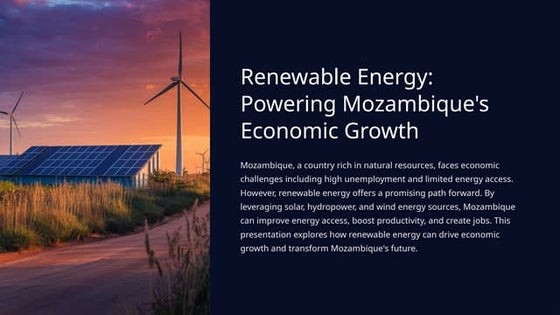



Renewable-Energy-Powering-Mozambiques-Economic-Growth.pptxRofino Licuco
╠²
Mozambique, a country with vast natural resources and immense potential, nevertheless faces several economic challenges, including high unemployment, limited access to energy, and an unstable power supply. Underdeveloped infrastructure has slowed the growth of industry and hampered peopleŌĆÖs entrepreneurial ambitions, leaving many regions in the darkŌĆöliterally and figuratively.
https://www.rofinolicuco.net/blog/how-renewable-energy-can-help-mozambique-grow-its-economyESIT135 Problem Solving Using Python Notes of Unit-2 and Unit-3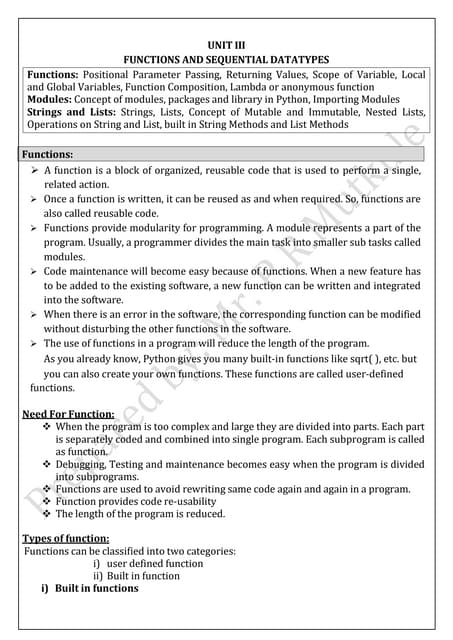



ESIT135 Problem Solving Using Python Notes of Unit-2 and Unit-3prasadmutkule1
╠²
ESIT135 Problem Solving Using Python Notes of Unit-2 and Unit-3Failover System in Cloud Computing System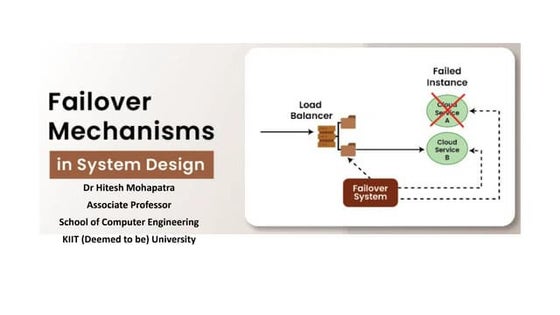



Failover System in Cloud Computing SystemHitesh Mohapatra
╠²
Uses established clustering technologies for redundancy
Boosts availability and reliability of IT resources
Automatically transitions to standby instances when active resources become unavailable
Protects mission-critical software and reusable services from single points of failure
Can cover multiple geographical areas
Hosts redundant implementations of the same IT resource at each location
Relies on resource replication for monitoring defects and unavailability conditionsDefining the Future of Biophilic Design in Crete.pdf



Defining the Future of Biophilic Design in Crete.pdfARENCOS
╠²
Biophilic design is emerging as a key approach to enhancing well-being by integrating natural elements into residential architecture. In Crete, where the landscape is rich with breathtaking sea views, lush olive groves, and dramatic mountains, biophilic design principles can be seamlessly incorporated to create healthier, more harmonious living environments.
How to Build a Speed Sensor using Arduino?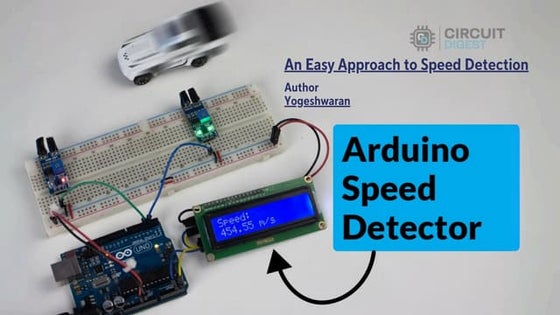



How to Build a Speed Sensor using Arduino?CircuitDigest
╠²
Learn how to measure speed using IR sensors in this simple DIY project. This tutorial cover circuit diagram, Sensor calibration and speed calculations and optimized Arduino code for real time speed measurements.Unit 1- Review of Basic Concepts-part 1.pptx



Unit 1- Review of Basic Concepts-part 1.pptxSujataSonawane11
╠²
DS, ADT, Algorithms, Asymptotic Notations are summarized. Indian Soil Classification System in Geotechnical Engineering



Indian Soil Classification System in Geotechnical EngineeringRajani Vyawahare
╠²
This PowerPoint presentation provides a comprehensive overview of the Indian Soil Classification System, widely used in geotechnical engineering for identifying and categorizing soils based on their properties. It covers essential aspects such as particle size distribution, sieve analysis, and Atterberg consistency limits, which play a crucial role in determining soil behavior for construction and foundation design. The presentation explains the classification of soil based on particle size, including gravel, sand, silt, and clay, and details the sieve analysis experiment used to determine grain size distribution. Additionally, it explores the Atterberg consistency limits, such as the liquid limit, plastic limit, and shrinkage limit, along with a plasticity chart to assess soil plasticity and its impact on engineering applications. Furthermore, it discusses the Indian Standard Soil Classification (IS 1498:1970) and its significance in construction, along with a comparison to the Unified Soil Classification System (USCS). With detailed explanations, graphs, charts, and practical applications, this presentation serves as a valuable resource for students, civil engineers, and researchers in the field of geotechnical engineering. Machine Vision lecture notes for Unit 3.ppt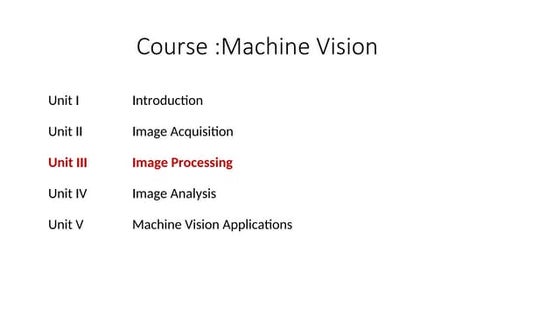



Machine Vision lecture notes for Unit 3.pptSATHISHKUMARSD1
╠²
This is the document related to machine vision subject for final year mechatronics students.Improving Surgical Robot Performance Through Seal Design.pdf



Improving Surgical Robot Performance Through Seal Design.pdfBSEmarketing
╠²
Ever wonder how something as "simple" as a seal can impact surgical robot accuracy and reliability? Take quick a spin through this informative deck today, and use what you've learned to build a better robot tomorrow.Determination of free swell index of soils
- 1. DETERMINATION OF FREE SWELL INDEX OF SOILS PRESENTED BY- DAVINDERPAL SINGH ASSISTED BY- AKHILESH KAUSHAL
- 2. ABOUT TEST ’üĄ IT IS A TEST OF SOIL AND COMES UNDER SOIL MECHANICS TESTS. (GEOTECHNICAL ENGINEERING) ’üĄ CODE USED IS:2720 (PART 40)-1977
- 3. APPARATUS ’üĄ IS SIEVE 425 micron (IS:460) ’üĄ 100 ml CAPACITY FLASK (IS:878) TWO ARE REQUIRED ’üĄ STIRRER (THIN ROD, CAN BE GLASS ROD) ’üĄ OVEN ’üĄ ENAMEL TRAY ’üĄ WEIGHING BALANCE (accurate upto 0.01 g)
- 4. PROCEDURE ’üĄ Soil sample upto 500 gram is taken from desired site and kept in oven for 24 hours at (100-110)0C, so that sample becomes oven dried. ’üĄ Then sample is sieved through 425 micron IS SIEVE and sample passed is taken. ’üĄ Sample finer than 425 micron is taken in two flask of 100 ml capacity, 10 gram in quantity in each flask.
- 8. PROCEDURE ’üĄ In first flask already filled with 10 gram oven dried sample finer than 425 micron, kerosene oil is added upto 100 ml mark. ’üĄ In second flask which is also filled with 10 gram oven-dried sample finer than 425 micron, distilled water is added upto 100 ml mark of flask. ’üĄ Then sample are stirred well by a stirrer to remove entrapped air in it.
- 10. PROCEDURE ’üĄ Then two flasks are kept ideal for not less than 24 hours time allowing sample to swell and settle. ’üĄ Atleast Three Readings are taken and their average is given as a result.
- 12. FORMULA
- 13. RESULT ’üĄ FREE SWELL INDEX=((VW ŌĆō VK) / (VK))*100 = ((9 -8) / (8))*100 = 12.5% ’üĄ TAKE FURTHER TWO READINGS AND TAKE THEIR AVERAGE.




